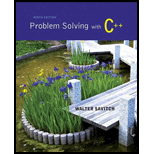
Solution to
To combat election fraud, your city is instituting a new voting procedure. The ballot has a letter associated with every selection a voter may make. A sample ballot is shown.
1. VOTE FOR MAYOR
A.
| Pincher, Penny ▢ |
B.
| Dover, Skip ▢ |
C.
| Perman, Sue ▢ |
2. PROPOSITION 17
D.
| YES ▢ |
E.
| NO ▢ |
3. MEASURE 1
F.
| YES ▢ |
G.
| NO ▢ |
4. MEASURE 2
H.
| YES ▢ |
I.
| NO ▢ |
After submitting the ballot, every voter receives a receipt that has a unique ID number and a record of the voting selections. For example, a voter who submits a ballot for Sue Perman, Yes on Proposition 17, No on Measure 1, and Yes on Measure 2 might receive a receipt with
| ID 4925 : CDGH |
The next day the city posts all votes on its Web page sorted by ID number. This allows a voter to confirm their submission and allows anyone to count the vote totals for themselves. A sample list for the sample ballot is shown.
| 4925 | CDGH |
| 4926 | AEGH |
| 4927 | CDGI |
| 4928 | BEGI |
| 4929 | ADFH |
Write a program that reads the posted voting list from a file and outputs the percent of votes cast for each ballot item. You may assume that the file does not have any header lines. The first line will contain a voter ID and a string representing votes. Define a class named Voter that stores an individual’s voting record. The class should have a constructor that takes as input a string of votes (for example, “CDGH”), a voter ID, and accessor function(s) that return the person’s ID and vote for a specific question. Store each Voter instance in an array or
Want to see the full answer?
Check out a sample textbook solution
Chapter 11 Solutions
Problem Solving with C++ (9th Edition)
Additional Engineering Textbook Solutions
Degarmo's Materials And Processes In Manufacturing
INTERNATIONAL EDITION---Engineering Mechanics: Statics, 14th edition (SI unit)
Java How to Program, Early Objects (11th Edition) (Deitel: How to Program)
Starting Out with Python (4th Edition)
Starting Out with Java: From Control Structures through Data Structures (4th Edition) (What's New in Computer Science)
 C++ Programming: From Problem Analysis to Program...Computer ScienceISBN:9781337102087Author:D. S. MalikPublisher:Cengage Learning
C++ Programming: From Problem Analysis to Program...Computer ScienceISBN:9781337102087Author:D. S. MalikPublisher:Cengage Learning Microsoft Visual C#Computer ScienceISBN:9781337102100Author:Joyce, Farrell.Publisher:Cengage Learning,Programming Logic & Design ComprehensiveComputer ScienceISBN:9781337669405Author:FARRELLPublisher:Cengage
Microsoft Visual C#Computer ScienceISBN:9781337102100Author:Joyce, Farrell.Publisher:Cengage Learning,Programming Logic & Design ComprehensiveComputer ScienceISBN:9781337669405Author:FARRELLPublisher:Cengage EBK JAVA PROGRAMMINGComputer ScienceISBN:9781337671385Author:FARRELLPublisher:CENGAGE LEARNING - CONSIGNMENT
EBK JAVA PROGRAMMINGComputer ScienceISBN:9781337671385Author:FARRELLPublisher:CENGAGE LEARNING - CONSIGNMENT EBK JAVA PROGRAMMINGComputer ScienceISBN:9781305480537Author:FARRELLPublisher:CENGAGE LEARNING - CONSIGNMENT
EBK JAVA PROGRAMMINGComputer ScienceISBN:9781305480537Author:FARRELLPublisher:CENGAGE LEARNING - CONSIGNMENT C++ for Engineers and ScientistsComputer ScienceISBN:9781133187844Author:Bronson, Gary J.Publisher:Course Technology Ptr
C++ for Engineers and ScientistsComputer ScienceISBN:9781133187844Author:Bronson, Gary J.Publisher:Course Technology Ptr





